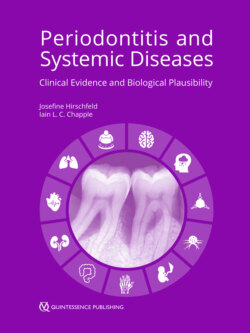Читать книгу Periodontitis and Systemic Diseases - Группа авторов - Страница 5
На сайте Литреса книга снята с продажи.
ОглавлениеPreface
The training of dental and medical students has diverged in recent decades along distinct pathways. Medical courses devote a trivial amount of time to the study of the oral cavity, presuming it to be the sole responsibility of oral health care professionals. Similarly, dental programmes cover the entirety of human diseases and the underpinning biological and pharmacological sciences as relatively minor components of a long programme of study, presuming it to be the unique responsibility of medical professionals. Hence, the mouth has become figuratively separated from the rest of the body. However, the mouth represents one of the most complex organs of the human holobiont, as well as one of the most vulnerable points of entry for microbial pathogens into the internal systems and structures of the body. Teeth naturally breach the ectodermal barrier of the oral mucosa (gingiva), and form a non-shedding surface that is colonised by the second most complex human microbiome. Nature has therefore created a unique anatomical and physiological barrier to isolate mesodermal and ectodermal tissues, which is composed of the junctional epithelium, immunological surveillance processes, and the gingival crevicular fluid. The vulnerability of this complex results in micro-ulcers that form following dental plaque biofilm accumulation, and a portal of entry for the microbiome into the internalised body systems develops. The downstream consequences are both significant and under-appreciated. It is therefore unsurprising that in recent decades, periodontitis has become recognised as a significant and independent risk factor for premature mortality, and multiple chronic non-communicable diseases associated with ageing. This book attempts to provide a contemporary evidence base for periodontal-systemic disease relationships, from epidemiology, to the biological plausibility of associations, to considerations of causal pathways and therapeutic challenges. It aims to put the mouth back inside the body for both dental and medical professionals, and in doing so, makes a compelling case for a reunion of these two professions. From such a reunion, collaborative care pathways can be developed that embrace both personalised and precision medicine, and place the individual at the centre of holistic care. It is time to break down the artificial barriers that have emerged from 20th century educational theory and practice.
Iain L. C. Chapple & Josefine Hirschfeld
